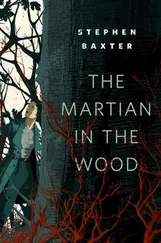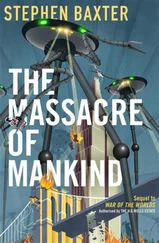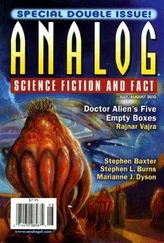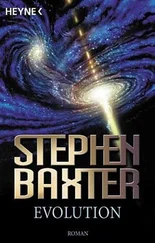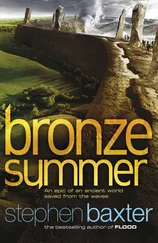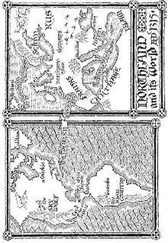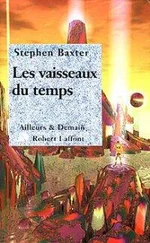As the sun set, the colours in the Canyon walls turned to gold. The sky up to the zenith was already stained pink. The sun was scattering light from haze layers fifteen or twenty miles above sea level. LIDAR measurements, pulsed laser beams scattered from the haze layers, had confirmed that the Edinburgh event had spread dust and aerosol particles throughout the stratosphere, all across the middle latitudes of Earth.
The ozone layer was taking a beating from the chlorine injected up there. The meteorologists and climatologists and oceanographers were having fun predicting the impact on the atmosphere’s heat balance. A global cooling of maybe a half a degree. Acid rain, from all the sulphuric acid being created up there. Disruption to El Niño, in the equatorial Pacific, over the coming summer and fall.
Droughts in Australia. Heavy rain and waves on the coast of California. And so on.
And this, she thought, is evidently just the start.
The first star was already out, low in the east. Maybe it was Jupiter.
She knew if she dragged herself out of bed in the morning, she would see Venus, still bright enough to dazzle and cast shadows, surrounded by a halo from all the shit in the upper atmosphere.
Beautiful. Deadly.
Scott was pointing out some of the Canyon features to her. “…The peak over there is Mount Sinyala.” A crude cylindrical plug, with a flared skirt of smashed rock. “The channel that lies between Sinyala and these pinnacles in the foreground is the Colorado itself. The plateau you can see at the foot of Sinyala is called the Esplanade.” A cracked and shattered sheet. “It’s an erosional feature resting on one of the more resistant members of what we call the Supai Group of rocks. You can clearly see the contact between the Coconino Sandstone — that’s the lighter coloured stuff on top — and the Hermit Shale, the deeper red below.”
“Yes.”
“This is the western end of the Canyon. We’re a goodly way away from where the tourists come to roost, at the resort areas on the South Rim some way to the east of here. The landscape here is different. Older.” He pointed. “You can see cinder cones over here. Lava cascades.” He looked at her. “You know, you can tell the nature of the rocks, just by looking, just from the way they have eroded. The shales form slopes. The thick beds of limestone and sandstone form steep, almost vertical cliffs. And the Inner Gorge, at the very base of the Canyon, is a V-shaped groove that reaches down maybe a thousand feet to the river itself. Those are ancient rocks, igneous and metamorphic…”
She could see, now he described it, how the Canyon was a complex structure, channel cut within channel, Canyon within Canyon, each inner valley chiselled into harder, older rocks, all of it centred on the Inner Gorge, the narrowest valley cut into the oldest rock of all.
“Enough of the tourist stuff.” Now it was Monica’s turn to point. “Tell me about that.”
It was a plume of black smoke, rising from one of the incised channels.
Scott grinned. “You can see for yourself. One of those old cinder cones has just cracked open and started belching ash. We think a more significant event is on the way. We’ve recorded more seismic activity in the Canyon area in the last few weeks than in the previous couple of years. It’s actually very exciting; there are a couple of dozen guys from the Survey working the area right now…”
She let him run on. Right now the Administration was keen to keep enthusing scientists off the screens, but if this kid’s excitement was what motivated him to be up here and keep working and studying and gathering data, that was fine by her. The fact that what he was studying was liable to kill him, ultimately, was neither here nor there.
For it was clear that the sudden, unexpected rash of minor volcanism in the Canyon, like that in a dozen other sites around the world, was directly related to the particle cloud that had spread around the planet from Edinburgh: what Henry Meacher called the Moonseed, the alien infection that — for weeks, it seemed — had been raining down out of the stratosphere and was eating into the very rock beneath her feet.
The precedent of Edinburgh for what would follow was not encouraging. And what she needed to find out was what would happen when the Moonseed got into those deep old rocks.
On the way here, she’d had another e-mail, from Alfred Synge.
› Here’s what we think is happening in Venus. And I’m sure you can express it, not to mention understand it, far better than I can. › Take one of your rolled-up ten-dimensional string objects. Pinch it, like compressing a garden hose. As you approach zero width, you generate quantum-mechanical waves, membranes wrapped around the scrunched dimensions. The waves are extremal black holes…
Actually Monica didn’t agree with the nomenclature here. These “black holes” were nothing like the collapsed stars of astrophysics. They were just solitons, clumps of string fields; the physicists preferred to call them black bubbles or black sheets.
But arguments about nomenclature weren’t the most important thing right now, she reflected.
› The black holes are massless, so they flee at the speed of light. But, like massless photons, they aren’t without momentum. So they exert a push. › Monica, we think that inside Venus there’s an organization of mass and energy that is working as a generator of extremal black holes. Maybe that’s what the transformation of the planet is “for’, if you can think of such events as having anything like a single purpose. There is a fountain of black holes streaming from where Venus’s north pole used to be. And it is pushing what’s left of the planet out of its orbit, away from the plane of the ecliptic. It’s like a rocket, Monica, a black hole rocket…
It was fanciful, abstract. The whole Venus event had become a kind of theoretical toy to be kicked around by the young and/or over-enthusiastic, including Alfred, and the hypotheses just got wilder. It was impossible to connect to the grubby reality of a cracked cinder cone, here in this great chasm.
And yet, it seemed, connected they were.
Alfred’s mail ended in rambling, a rant about NASA’s post-Edinburgh decision to destroy its remaining forty-billion-dollar Moonrock stock. The genie is out of the bottle! The horse has bolted! This is vandalism.
No, she thought. You don’t understand. It’s a symbol. Appeasing the gods.
“Tell me about the Inner Gorge rocks,” she said to Scott Coplon.
“Yeah. They’re primarily schists and gneisses. The rocks were formed from pre-existing igneous and sedimentary rocks during mountain-building events in the deep past. A gneiss is what we call granitic rocks which have been exposed to later episodes of metamorphism, and—”
“I know. Go on.”
“Sorry. Well, we know that what’s exposed here is just the top of a much deeper layer. The rocks extend thousands of feet down from the surface and form the basement of the North American continent.”
“The basement?”
He nodded. “Rocks of that age and character underlie most of the continent. But it’s only where they have been exposed, like here, that we can study them…”
Monica knew a little about plate tectonics. She knew that the continents rode like rafts of granite, on the plates that slid on currents in the viscous molten rock that lay beneath. The younger rocks of the ocean floors, gabbro and basalt, were in time subducted — dragged back into the interior of the Earth, to be melted and reborn. But the ancient rocks of the continents, riding above, survived.
And now it looked as if, here and elsewhere, the Moonseed might reach those foundation rocks, the granite core of the continent itself, through this immense wound of rock and strata.
Читать дальше
Конец ознакомительного отрывка
Купить книгу

